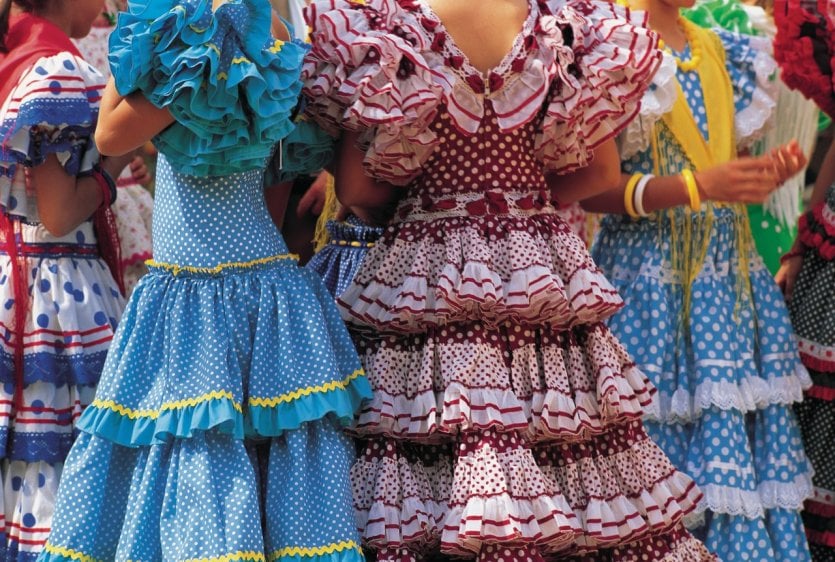
An old Spanish song tells us "Who has not seen Seville, has not seen a wonder"... And it's true! Joyful and danceable, Seville is the place of all cultural mixes : Jewish, Catholic and Muslim, it would be wrong to use the word contrast to describe the capital of Andalusia. Everything is in perfect harmony, as evidenced by the architecture of its sublime cathedral. What to do in Seville Discover our selection of must-sees, where gardens and old stones rub shoulders in the semi-tropical heat with respect and beauty. Perhaps it's this harsh climate that has shaped the warm hearts of the city's inhabitants and its magic. For Seville is truly unique and a must-see in Spain, with its incredible monuments and unusual, unspeakable je-ne-sais-quoi. Bewitching and fascinating, Seville is a sure bet for anyone in search of the extraordinary.
1. Torre del Oro
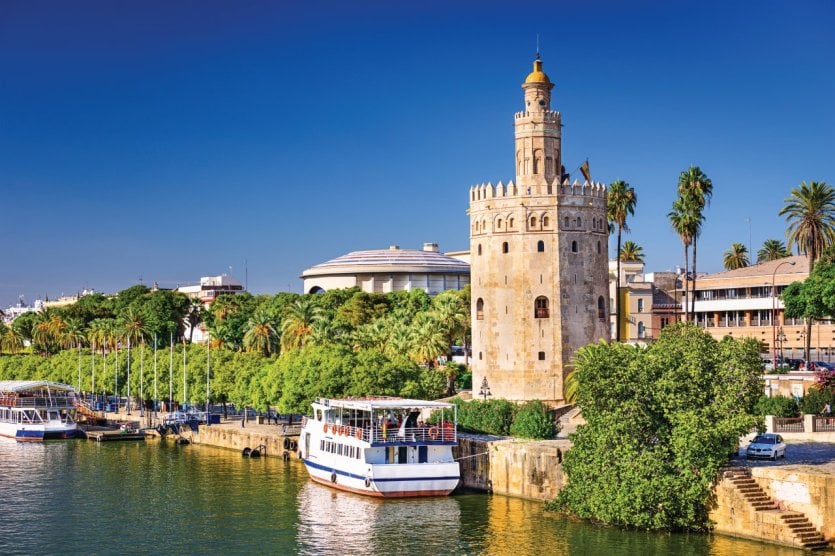
Built in the 13th century, this tower reinforced the walls of the Alcazar. A large chain was hung from it across the Guadalquivir River. The purpose of the manoeuvre was to prevent traffic from entering the city, so that no enemy ships could enter. When you see this tower, you might wonder why it's called the "Tower of Gold"... For some, it refers to the golden azulejos decorating the tower's façade. For others, the tower served as a customs post. Another reason has its roots in legend. According to this legend, King Don Pedro locked up a woman with beautiful golden hair. Whatever its original name, today the tower houses a pleasant maritime museum, where you can discover its interior and the history of Seville's river port.
2. What to do in Seville Visit the Royal Alcazares
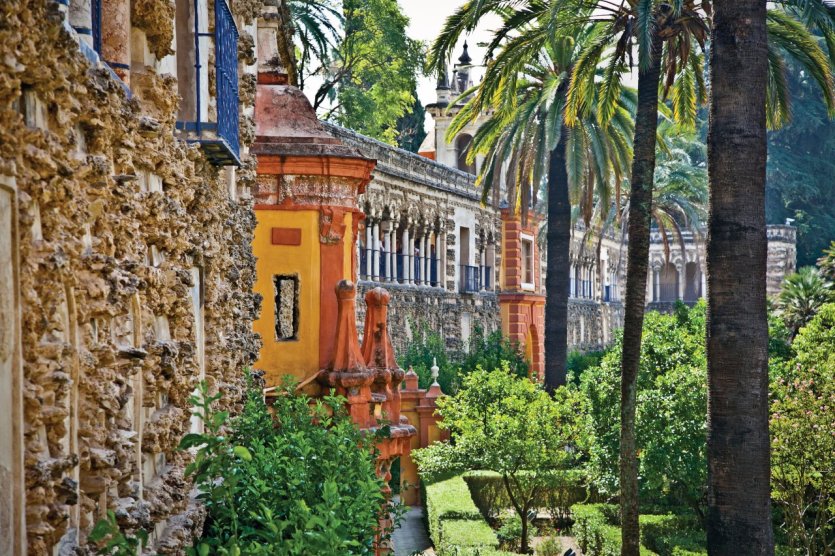
It's impossible not to visit! Listed as a World Heritage Site by UNESCO, Seville's Royal Alcazares is a royal residence with many wonders. The palace of Peter the Cruel is one of the most important buildings. It has undergone numerous restorations and is full of surprises, such as the magnificent patio of "las Doncellas", which was once the courtyard of the Maids of Honor. Don't miss the Salón de los Embajadores, with its dome of pure splendor. Finally, stroll through the Alcazar gardens. Incredibly beautiful, with sumptuous fountains, imposing fountains and celestial sculptures. The many plants and trees transport us directly to the Gardens of Eden. An ideal place for a royal siesta!
Want to find out more? Check out our article on How to visit the Alcazar in Seville: tickets, prices and tips! We also advise you to book your Alcázar ticket in advance of your visit by clicking here!
3. Palace of the Countess of Lebrija
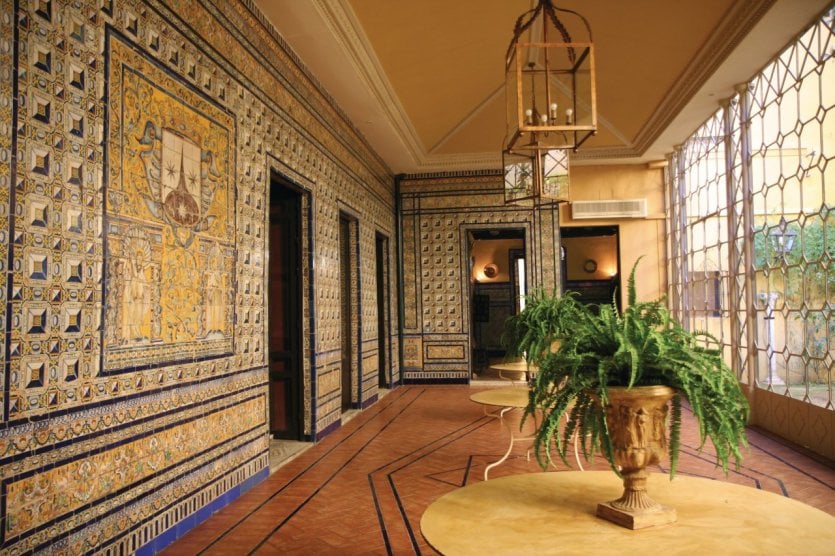
In the heart of the city, you'll find this little jewel, one of Andalusia's must-sees. Built in the 16th century, it was not until the 19th century that the house became a true example of Mudejar art and azulejos.Its monumental staircase is considered one of Seville's masterpieces. It was the Countess de Lebrija who turned the palace into a veritable museum. Acquired in 1901, this avid traveller and archaeologist brought back magnificent treasures from her escapades abroad, which can be seen throughout the residence. Roman mosaics, pieces from Italica (an ancient Roman city in Andalusia), Muslim ceramics and more. You'll discover some spectacularly eclectic pieces! Upstairs, you'll find the countess's apartments, again decorated with style.
4. Plaza de España
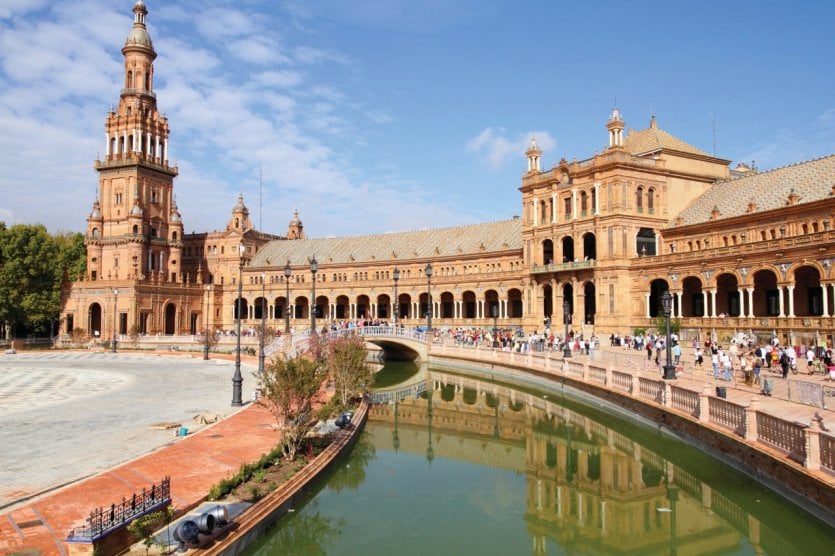
This must be one of the most spectacular squares in Spain. But this masterpiece isn't that old! In fact, it was completed in 1928 for the opening of the 1929 Ibero-American Exhibition. The central palace is a successful blend of several architectural styles, and features a number of bas-reliefs in brick and marble. The two wings of the palace contain a number of ornaments symbolizing the Spanish provinces. Opposite the palaces, four bridges of rare beauty cross canals. This incredible place was the setting for many cult films, such as Lawrence of Arabia and Star Wars: Episode II - Attack of the Clones. You'll find plenty of knick-knacks and refreshments. Be warned, though, that you'll want to get there early in the morning or early in the evening: the heat can be oppressive. If you go in November, for example, you'll have no trouble wandering around at any time of day.
5. Archivio de Indias
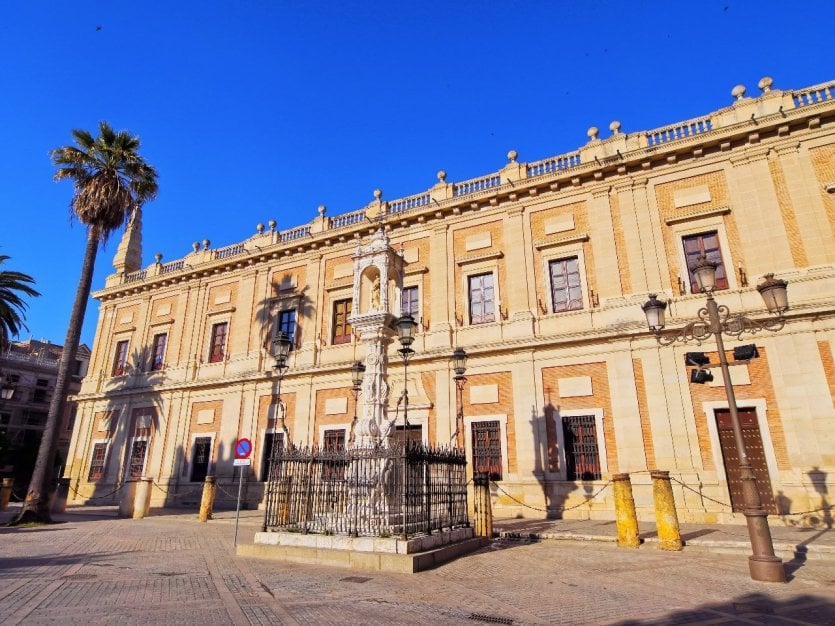
Formerly known as Casa Lonja or Casa de Contratación, this building is now called Archivio de Indias. It was a kind of stock exchange for colonialism. It housed all the gold gleaned between Latin America and Spain. Over 90 million documents are stored here, but only researchers have access... But don't worry, you can visit the splendid patio and discover the building's colonial past through exhibitions. For example, one of the earliest maps of the Gulf of Mexico, drawn up in 1519, is on public display. The exhibition tracing the history of Spanish colonialism is relatively well designed, and makes it easy to understand the evolution of relations between Spanish colonizers and the colonized.
6. What to do in Seville Stroll through los Jardines de Murillo
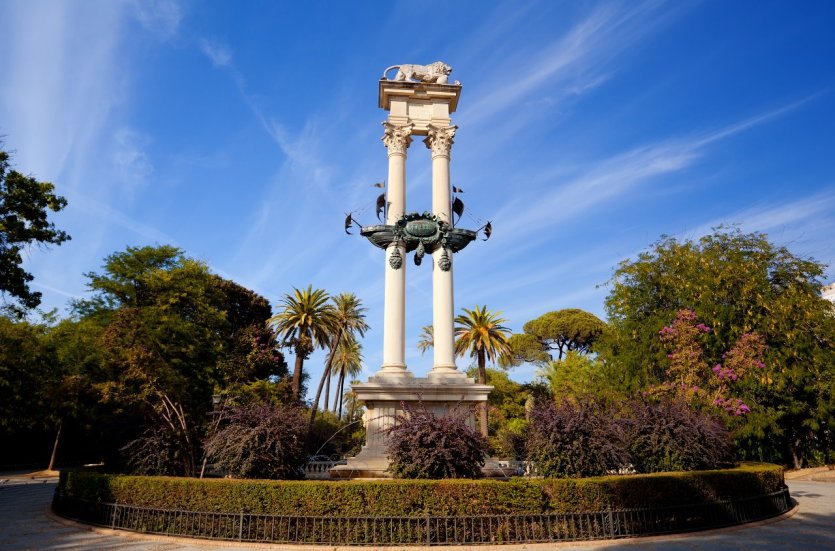
To get there, take either avenida Menendez Pelayo or calle San Fernando. Created in the early 20th century, they are quite similar to Maria Luisa Park. Sevillian in style, they are adorned with numerous plants, each as bewitching as the next. Add to this the many palm trees lining the various paths, and you'll think you're on an island! While you're here, stop by the monument to Christopher Columbus, sculpted by Lorenzo Coullaut-Varela for the 1929 Ibero-American Exposition. It's a great place for sunbathing! A stop at the gazebo paying tribute to the painter José García Ramos is also a must. Several of his works have been reproduced in ceramic, with sensational results!
7. The Plaza de Toros de la Real Maestranza
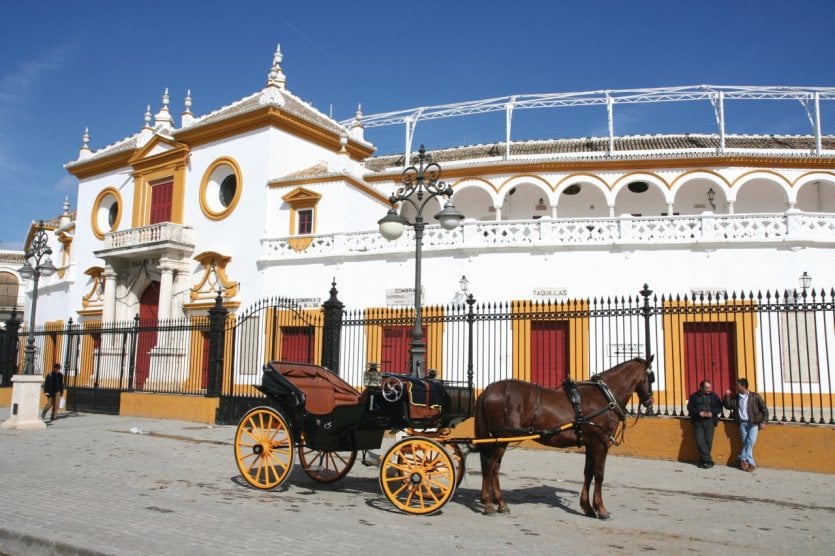
Whether you're a bullfighting fan or not, the "Real Maestranza de Caballería de Sevilla" bullring is well worth a visit. Numerous stars of the bullfighting world have trodden the boards of this extraordinary venue. With a capacity of up to 14,000 spectators, it was Vincente San Martín who drew up the plans. Inside the stands is a museum retracing the history of bullfighting in Spain over the centuries. A room of paintings is also accessible, with the world of bullfighting taking center stage. Among the many works on display is J. Stradan's Corrida à cheval, the first known representation of a bullfighting scene. In the square near the bullring, a statue pays tribute to "la Cigarrera". This woman was murdered by her former lover while the love of her life was enjoying great success in the bullring.
8. Visit the Cathedral and Giralda
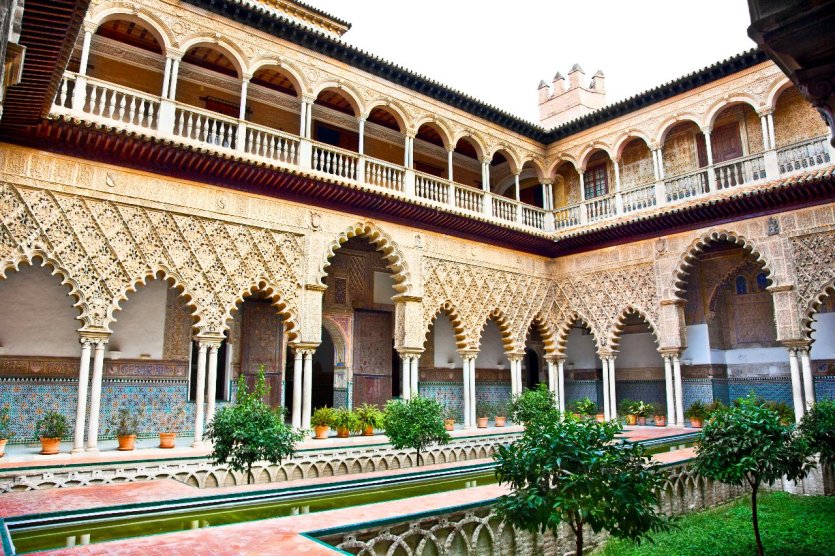
These 2 inseparable monuments are Seville's greatest treasure. Built on a former mosque and minaret, these two buildings symbolize the triumph of Christianity in Seville. The cathedral is one of the largest in Europe! This incredible, weathered architecture looks like something out of a tale from the Arabian Nights. Add to this architectural splendor over 500 paintings by some of the world's greatest painters, and you've got a must-see! The great altarpiece is also a must-see! As is the tomb of Christopher Columbus. For those who want the best view of the city, it's possible to climb up to the Giralda platform. At its summit stands an astonishing weathervane: the giraldillo. Despite weighing in at 1,300 kg of bronze, this statue manages to turn with the wind!
The impressive cathedral with its Giralda bell tower is one of Seville's most popular monuments, so there's bound to be a long queue. We recommend that you book a ticket here to avoid queuing at the entrance. If you wish to enjoy a more in-depth visit, take an audioguide.
9. Casa de Pilatos
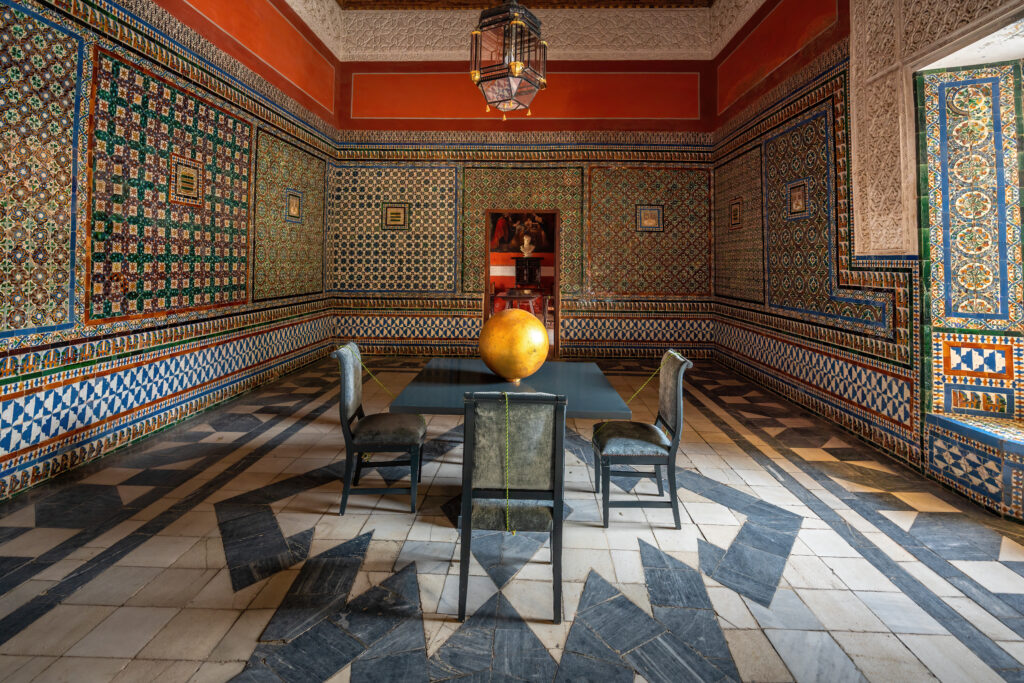
Admire this magnificent mansion in the heart of the Jewish Quarter. Also known as San Andrès, this building is a wonderful example of Andalusian architecture. Construction began under the aegis of the Marquis of Tarifa after a trip to the Holy Land, and lasted 100 years. It is said that it was thanks to this trip that the house came to be known as Pilate's House, as it bears a strong resemblance to the original. The exterior is lined with azulejos and columns, and features magnificent statues of Roman goddesses and busts of ancient celebrities such as Caligula and Adrian. Within its walls, the mansion conceals numerous pictorial treasures, including a Goya and Sebastiano del Piombo's Madonna of Pity. Don't miss the green azulejos staircase leading to the second floor, a true marvel!
Interested in visiting this magnificent residence? Book your ticket for the first floor of Casa de Pilatoshere , with audio guide included.
10. Stroll through the historic Santa Cruz district
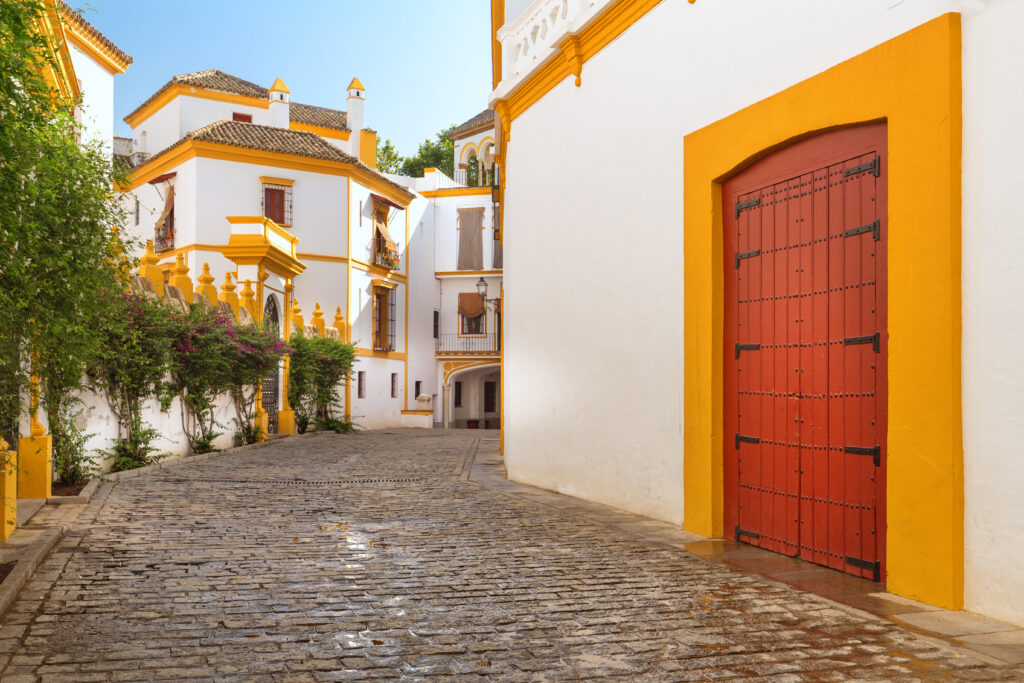
The Santa Cruz district is a magnificent historic neighborhood where you can stroll and discover Seville's tiny streets and must-see monuments. You'll find an extraordinary choice of bars and small restaurants to stop off at during your visit to Seville. Don't miss the beautiful white houses with their wrought-iron gates and geranium-adorned facades, and the little squares covered with orange trees that are fragrant in spring... There isn't really an itinerary to recommend, but here are a few places worth a visit: Plaza Doña-Elvira, Santa-Maria-la-blanca, Hospital de los Venerables or the Museo-Casa Murillo.
11. What to do in Seville Visit the Museum of Fine Arts
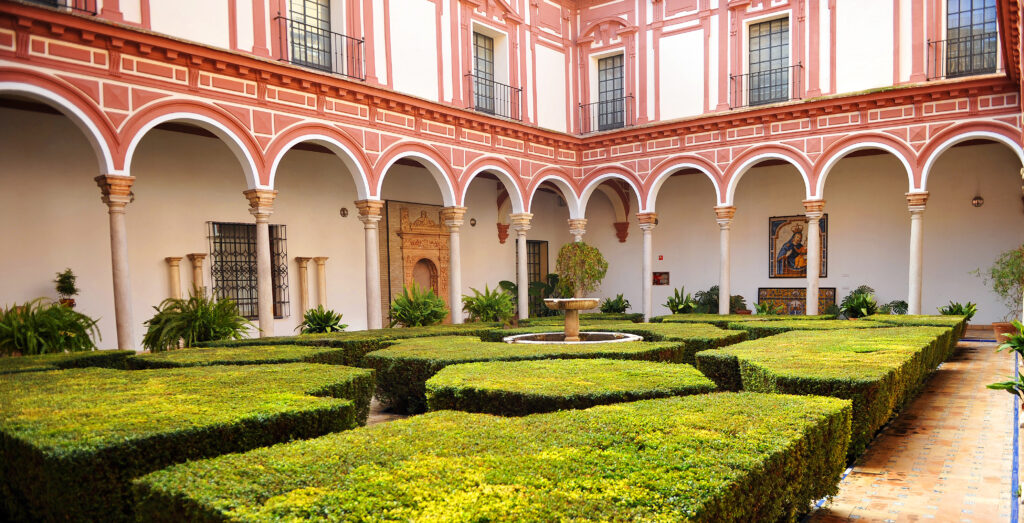
Housed in a former 17th-century convent, Seville's Museum of Fine Arts is one of Spain's most important art museums. It houses over a thousand paintings, drawings and sculptures. The museum is particularly renowned for its exceptional collection of Seville Baroque works, but you'll also find a fine series of Flemish paintings from the 15th and 16th centuries, as well as works by great artists. These include the Sevillian painter Valdés Leal, Zurbarán, Murillo, El Greco, Francisco Pacheco, Herrera el Vecchio, Van Dyck, Veronese, Goya, de Morales, as well as numerous sculptors: Torrigiano, Montañés, Roldán, de Mena... The museum grounds alone are worth a visit, with their patios and fountains, and their high, bright ceilings.
We particularly recommend this guided tour of the Museo de Bellas Artes, where an expert guide will take you through the history of the museum's most emblematic pieces.
12. Take the family to the Isla Magica theme park
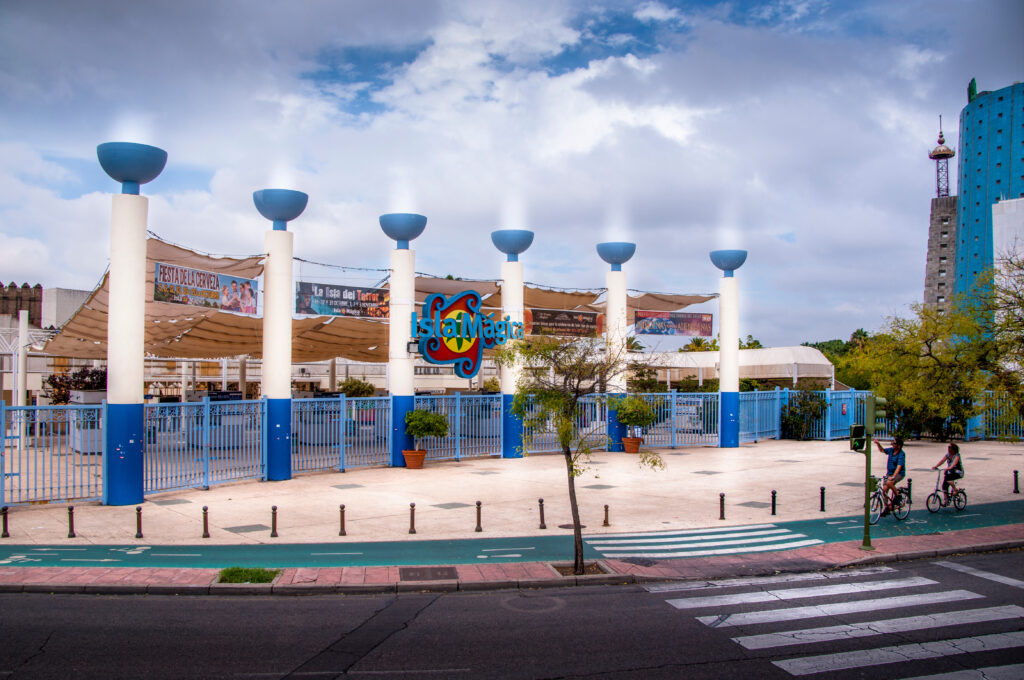
This is an ideal activity for the whole family, and one that will leave you with stars in your eyes! This 312,000 m²theme park will take you back in time to the 16thcentury , to the era of the Spanish pioneers and the discovery of the New World. You'll discover seven themed zones with different universes: at the gates of America or the Indies, in the pirates' lair, in Amazonia, in the world of youth(Fuente de la Juventud, created especially for children) or in the heart of El Dorado. There's a wide range of attractions (rides, games and shows) to suit all tastes. For thrill-seekers, try the Desafío, a free-fall ride over 68 m, and the Jaguar, a roller coaster with repeated loops. There are also quieter attractions for the little ones. Don't miss the Anfiteatro del Lago (lake amphitheatre) or El Misterio del Lago, a magnificent show with fireworks, sound and water features.
13. Fresh air at Parque María Luisa
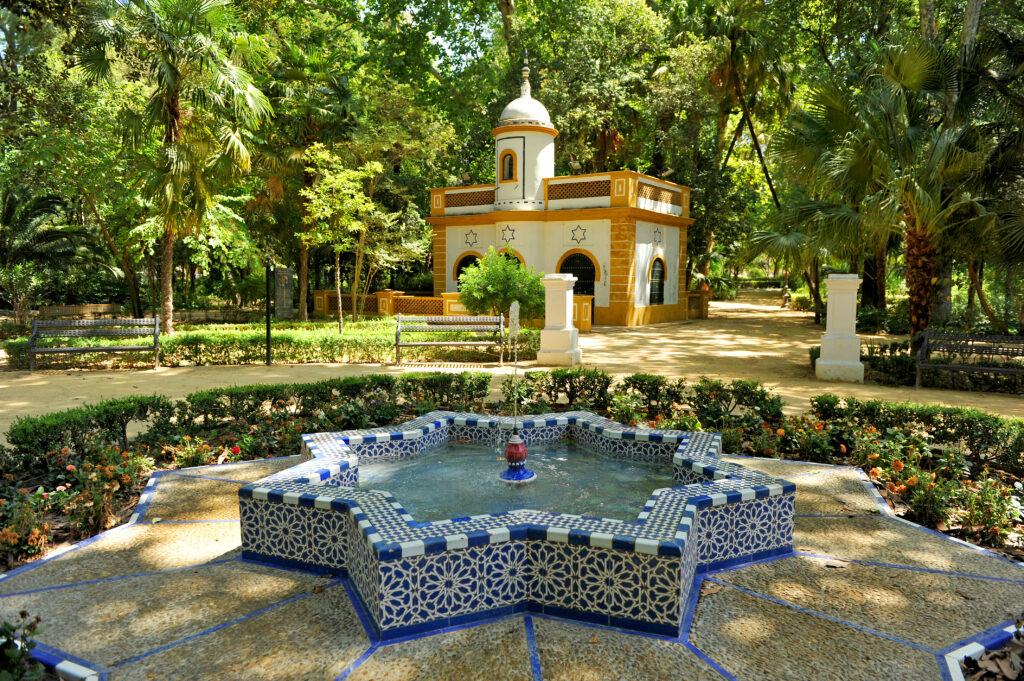
A veritable green lung in Seville, the Parque María Luisa is a very pleasant place to stroll among fountains and subtropical vegetation . There are over 1,000 palm trees, as well as banana, magnolia, orange, chestnut, lemon and eucalyptus trees... Don't miss the fuente de las Ranas (fountain of the frogs) and the isleta de los Patos (little island of the ducks), home to a charming pavilion where, according to legend, King Alfonso XII declared his love for María de las Mercedes. You can also see the Glorieta de Bécquer, a monument by Coullaut Valera to the Sevillian poet.
14. What to do in Seville Discover the Triana district
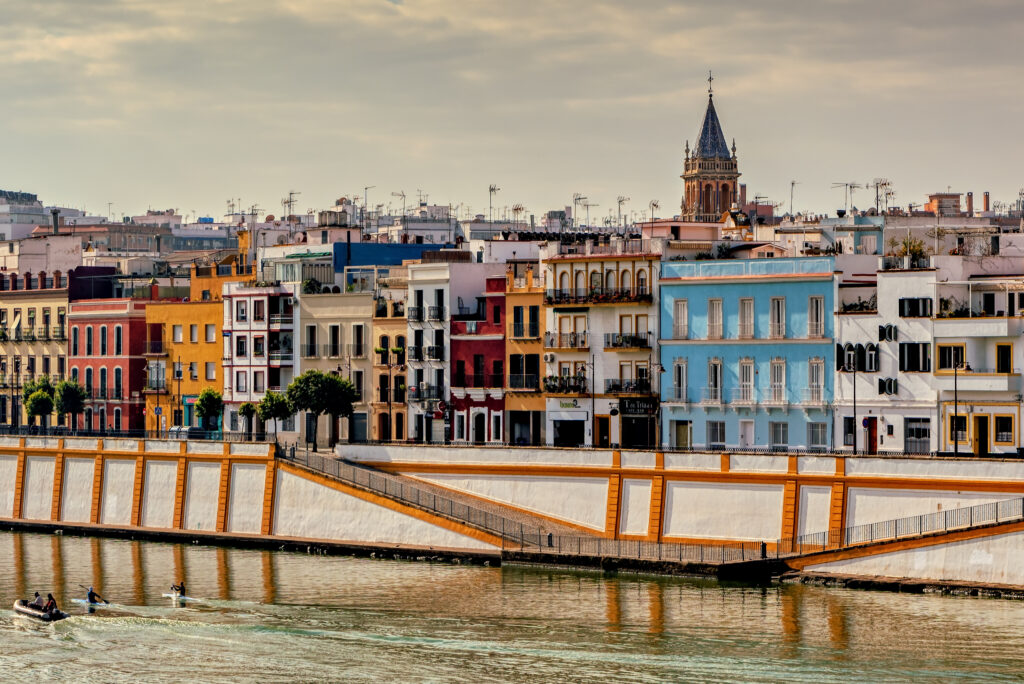
The Triana district has a very special charm and is well worth a slow visit. Its name derives from its location at the confluence of three (tri) rivers (ana), or from "Trajana", in homage to the Roman emperor Trajan. The Triana district is renowned as the birthplace of bullfighters, tonadilleras (folk singers), flamenco singers and historical figures such as Rodrigo de Triana, who accompanied Columbus on his discovery of America.
Take time to stroll down Calle Pureza , where you'll see the Mariners' Chapel, home to Triana's Virgin of Hope, andCalle San Jorge, where you'll see ceramic workshops and stores. Finish off with a drink on Calle Betis, on the banks of the Guadalquivir, where you'll find terraces and restaurants with a very special atmosphere.
15. See the Metropol Parasol
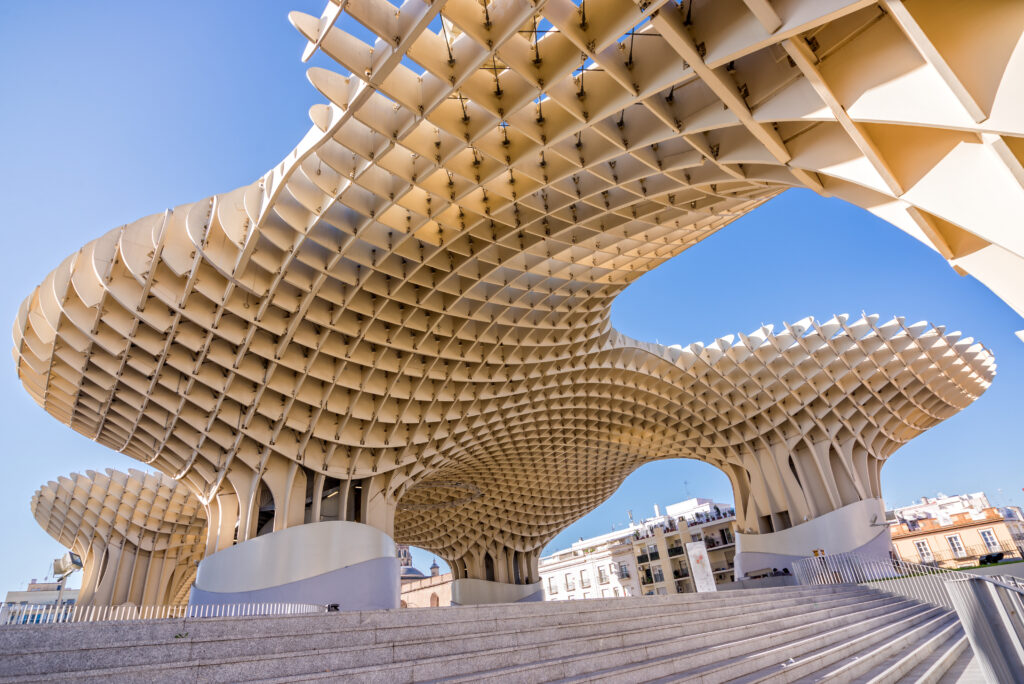
A visit to the Metropol Parasol is a must if you want to discover Seville in the 21st century and enjoy a panoramic view of the surrounding area. Inside, you'll find the new Encarnación market, a food court, a pedestrian plaza, an immersive multi-sensory room "Feeling Seville" and the Mirador, which is transformed at night with Aurora, a unique sound and light experience. The basement houses Antiquarium, the archaeological museum where you can see the remains discovered during pre-construction work on the site. Much of it dates back to Roman times (1st to 6th centuries), but you'll also seethe remains of an Almohad house from the Muslim period (12th and 13th centuries).
16. Visit the Las Dueñas Palace
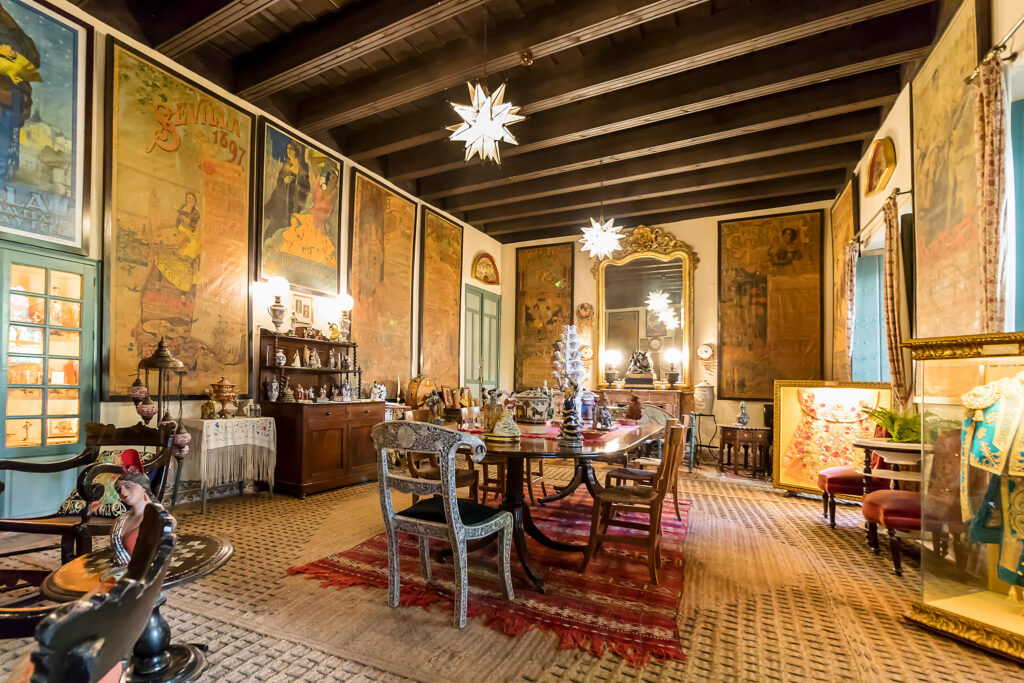
The Palacio de las Dueñas is a grand seigniorial palace (residence of the Dukes of Alba in Seville) in Gothic, Mudejar and Renaissance styles, built between the 15th and 16th centuries. The tour will take you through the interiors, patios and gardens to discover Seville's culture and city. You'll start with the caballerizas (stables), reflecting the importance of horses in Andalusian culture, and then move on to the patio des Limoneros(lemon patio). Inside, you'll see numerous works of art and decorative elements, followed by the gypsy's salon. Several rooms also illustrate the pillars of Andalusian culture : bullfighting, religion and flamenco.
Book your audioguide ticket for the Las Dueñas Palacehere , and discover Seville's astonishing palace and explore its majestic halls, courtyards and gardens.
17. What to do in Seville Taste the local specialties

Seville, Spain's gastronomic jewel, offers a rich and delicious palette of culinary specialties. An absolute must is the "Salmorejo", a cold soup with tomato, garlic and olive oil, perfect for cooling off on sunny days. Tapas are a veritable Sevillian art of living, from "espinacas con garbanzos" (spinach with chickpeas) to "gambas al ajillo" (shrimps with garlic). Don't forget to try the "tortilla española", a simple but divine potato omelette. For dessert, try the Spanish "flan " and "churros con chocolate" .
Where to stay in Seville?
Seville offers a diverse range of accommodation options to suit different budgets and preferences. The Santa Cruz district is located close to the Cathedral and Alcazar, offering easy access to the main tourist attractions. Here you'll find charming boutique hotels and guesthouses in picturesque alleyways. On the other side of the Guadalquivir River, Triana is a lively, bohemian district, famous for its ceramics and traditions. It's an excellent choice if you're looking for a more local, authentic atmosphere. El Porvenir is a quieter, more residential area with good public transport links. It's the ideal option if you're looking for a more peaceful environment while still being close to the places to visit.
Here are our three favorite accommodations in Seville:
- The cheapest
Hotel Alcantara, which you can book here is located right in the center of the old Santa Cruz district and offers bright, comfortable rooms, all opening onto an interior patio. The added bonus of this hotel is its proximity to the Casa del Flamenco, which offers flamenco shows every evening .
- The coziest
The Casa de Colon hotel is housed in a carefully restored colonial house built around a pretty central courtyard, decorated with Mensaque azulejos and surrounded by magnificent blue and white stained-glass windows. Enjoy breakfast on the third floor, with views of the Cathedral and Giralda. Click here to book your stay in just a few clicks!
- The most sumptuous
The Palacio de Villapanés is housed in an early 18th-century Sevillian Baroque palace, still inhabited by the Marquises of Villapanés until 2004. You'll see the family coat of arms on the main staircase, Roman columns from Itálica surrounding the patio, fountains and original azulejos... Click here to book your stay!
Click here to discover the rest of our favorite accommodations!
What to do in Seville in 3 days?
Seville is one of those destinations that's ideal for a cheap getaway for a few days, whether for a vacation or a long weekend. Three days in Seville offers a rich experience combining history, culture and culinary delights. Here's a suggested itinerary to make the most of your stay:
Day 1: Discover the historic center
Start your day at Seville's majestic Cathedral and the Giralda, its iconic bell tower. Next, explore the magnificent Alcazar, a royal palace with enchanting gardens. In the afternoon, stroll through the Santa Cruz district, wandering its winding streets and discovering its picturesque squares. End the day with an evening of tapas in one of the local bars.
Day 2: Immerse yourself in Art and Culture
Visit the Plaza de España, a unique work of architecture, then head for the Triana district, known for its bohemian atmosphere and artisan workshops. After lunch, head to Seville's Museum of Fine Arts for an immersion in Spanish art. In the evening, enjoy a flamenco show, a must-see experience to understand Andalusian musical passion.
Day 3: Stroll along the Guadalquivir and relax
Start with a stroll along the Guadalquivir River, perhaps taking a boat for a different view of the city. Then visit the Golden Tower (Torre del Oro) for its maritime history. In the afternoon, explore the Arenal district, renowned for its boutiques and cafés. End your stay in style with a traditional dinner in a local restaurant, savoring the unique flavors of Sevillian cuisine.
What to do in Seville in 4 days?
If you're lucky enough to spend a fourth day in Seville, you can explore more of the city or choose a nearby getaway. Here are a few suggestions to enrich your experience:
Option 1: Visit the Macarena Quarter and the Metropol Parasol
Start your day exploring the La Macarena district, famous for its basilica and lively atmosphere. Then head for the Metropol Parasol, also known as the "Setas de Sevilla", an impressive wooden structure offering panoramic views of the city. Spend the afternoon relaxing in one of the local parks, such as María Luisa Park.
Option 2: Excursion to Italica
Take an excursion to Italica, an ancient Roman city located just a few kilometers from Seville. Explore the well-preserved ruins, including an impressive amphitheater, once the third largest in the Roman Empire. This tour offers a fascinating insight into Roman history in Spain.


